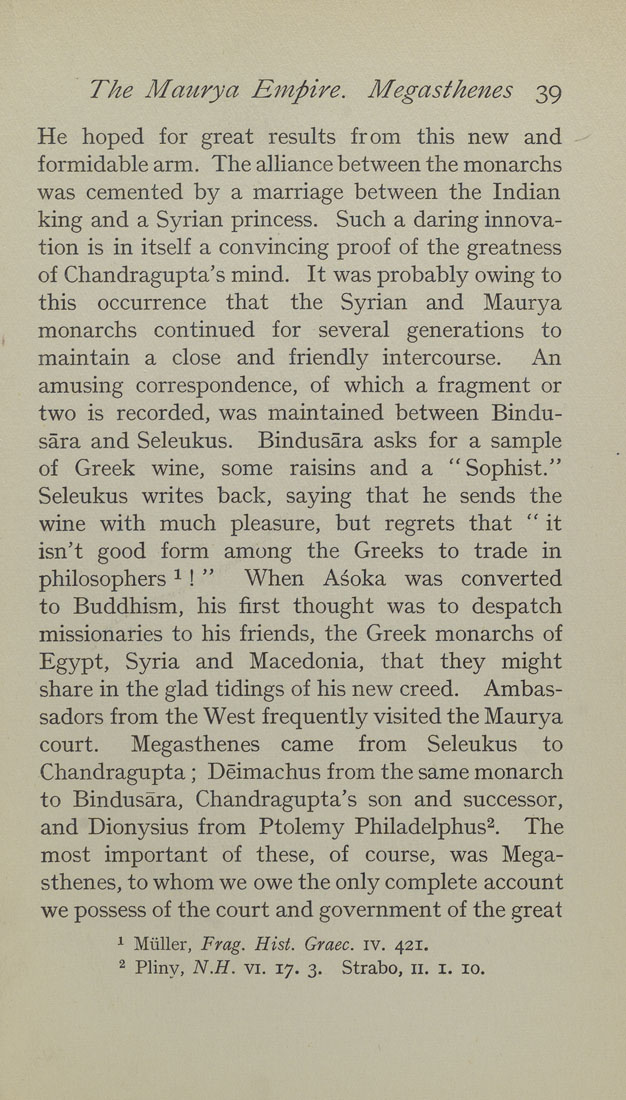The Matirya Empire. Megasthenes 39
He hoped for great results from this new and
formidable arm. The alliance between the monarchs
was cemented by a marriage between the Indian
king and a Syrian princess. Such a daring innova¬
tion is in itself a convincing proof of the greatness
of Chandragupta's mind. It was probably owing to
this occurrence that the Syrian and Maurya
monarchs continued for several generations to
maintain a close and friendly intercourse. An
amusing correspondence, of which a fragment or
two is recorded, was maintained between Bindu-
sara and Seleukus. Bindusara asks for a sample
of Greek wine, some raisins and a "Sophist."
Seleukus writes back, saying that he sends the
wine with much pleasure, but regrets that " it
isn't good form among the Greeks to trade in
philosophers ^ ! " When Asoka was converted
to Buddhism, his first thought was to despatch
missionaries to his friends, the Greek monarchs of
Egypt, Syria and Macedonia, that they might
share in the glad tidings of his new creed. Ambas¬
sadors from the West frequently visited the Maurya
court. Megasthenes came from Seleukus to
Chandragupta; Deimachus from the same monarch
to Bindusara, Chandragupta's son and successor,
and Dionysius from Ptolemy Philadelphus^. The
most important of these, of course, was Mega¬
sthenes, to whom we owe the only complete account
we possess of the court and government of the great
1 Miiller, Frag. Hist. Grace, iv. 421.
2 Pliny, N.H. vi. 17. 3. Strabo, 11. i. 10.
|








